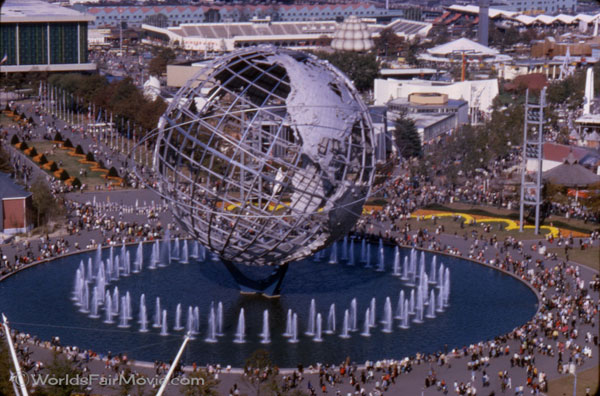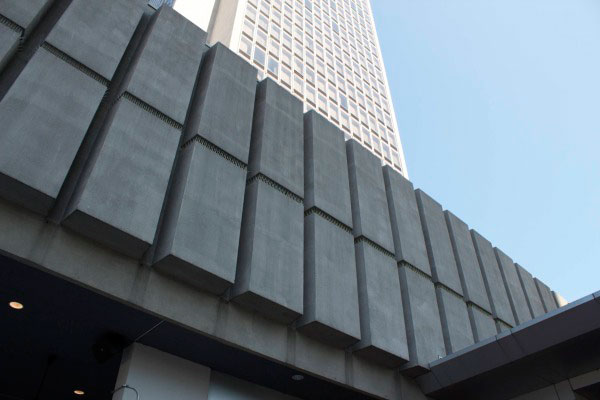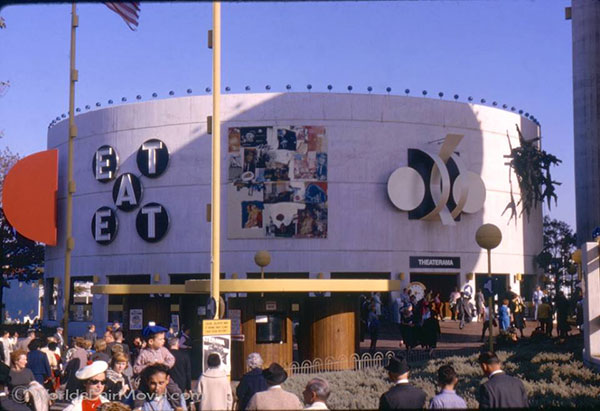
More than 55 years later, the spirit of the third New York World’s Fair remains. Disney fans, preservationists, and people lucky enough to attend the Fair haven’t forgotten it. Beginning in April 1964 and running for two six-month seasons, this grand exposition is more than a past event that evokes nostalgia. Memorable pieces of the pavilions in Flushing Meadows are still present across the country.
The optimistic look at technology and the future was prevalent in Brad Bird’s Tomorrowland, which recreated the Fair for an early sequence. The theme of “Peace Through Understanding” connects with fans and has led to renewed interest in such an important event.

Warm feelings about the Fair are everywhere in Ryan Ritchey’s After the Fair: The Legacy of the 1964-65 NY World’s Fair. From the first photos and audio clips, this documentary reminds us of the Fair’s charms. The ambitions of organizer Robert Moses didn’t come to fruition at Flushing Meadows, and the project lost millions due to mismanagement. Even so, its creative success is clear throughout the movie. Ritchey incorporates a diverse collection of participants including former Disney Imagineers like Bob Gurr and Rolly Crump, who helped create some of the most famous attractions. The mix of contributions from both experts and attendees helps Ritchey bypass any stuffiness.
The story begins with an interesting overview of the Fair and its most prominent attractions. Companies, states, and religions spared no expense in building exhibits. Many don’t feel out of date today. Seeing live actors interacting with dancing filmed characters at the DuPont pavilion still impresses. We may not have a house made of Formica or underground homes, but it’s fun to see the attempts. The gigantic structures were unique architectural feats in their own right. The giant IBM egg from architect Eero Saarinen (who also designed the Gateway Arch in St. Louis) was one of many structures that succeeded.

A Wealth of Material from the World’s Fair
What makes After the Fair succeed is the huge volume of images and videos from the event. We don’t just hear people talk about amazing pavilions; we actually see them. Richey doesn’t fall into the trap of too many talking heads. It’s a breezy documentary that never drags, and that’s quite a feat in a 102-minute presentation.
A majority of the running time includes updates on Fair exhibits that are still present in some form. I had no idea that so much was still in existence! I’ve driven by the downtown Hilton in St. Louis (pictured above) so many times and didn’t know it housed the Spanish pavilion in 1969. The Unisphere and New York state “flying saucer” observation platforms remain, but they’re just the tip of the iceberg.
Unlike the book Tomorrow-land, this film devotes significant time to the Disney attractions. Ritchey is a fan with an interest in Walt Disney World and EPCOT Center. We even learn the saga of Crump’s Tower of the Four Winds, which didn’t come out so well in his eyes. Marty Sklar joins Crump and Gurr to discuss the four attractions.
It isn’t too basic for Disney fans yet remains clear for less knowledgeable viewers. That’s a tricky balance. I also loved the connection between the 1982 EPCOT Center and this World’s Fair. There are a lot of similarities between the style of the imposing Future World structures and the highlights of the 1964/65 event.

Stories Beyond the Event
I’ll admit that part of my excitement for After the Fair comes from already being fascinated by the Fair. It’s hard to make a movie that’s more in my wheelhouse. Regardless, I feel good recommending it even if you aren’t so engaged with the history. There are so many interesting stories about where pieces went after the Fair.
One sad moment reveals that a fire destroyed the Austrian pavilion (now a ski resort) 10 days after the owner’s interview in the film. Other spots are falling into disrepair, even the famous New York State Pavilion. It is refreshing to learn that residents in Queens are moving to save the decaying location. This type of dedication will help to ensure that memories of the Fair stay alive for a very long time.
Additional Thoughts
Here are some other quick thoughts on this entertaining documentary:
- Jim Henson’s contributions to the Fair’s SKF pavilion surprise me, though you can definitely see his artistry in their robot animatronic. It takes a lot of creativity to make ball bearings exciting.
- Another odd inclusion is the Dinoland presented by the Sinclair Oil Corporation. The life-size replicas were shipped around the country after the Fair, and Ritchey takes a road trip to reveal their current spots.
- The section on pop culture references to the Fair includes some examples that were new to me, particularly CSI:NY’s three-episode arc using the mystery of the underground home. It’s a clever way to reference the Fair while still doing something unique.
- Finally, I have to mention silly pavilions like the unfortunately titled “Festival of Gas”, a marionettes show from Chrysler where the characters were made out of car parts, and American Express’ money tree. There’s definitely a level of kitsch that’s part of the fun when looking at the Fair.
Photos in this article are courtesy of After the Fair and used by permission of Ryan Ritchey.
Related Articles: After the Fair
The Tomorrow Society Podcast, Episode 2: Ryan Ritchey, After the Fair
Review: Tomorrow-land by Joseph Tirella
The Tomorrow Society Podcast, Episode 104: Ryan Ritchey on the Future of Immersive Entertainment



Great article on the film, I’ll definitely have to order the DVD for myself. It’s such a shame that many attractions from the ’64 fair were demolished or left to decay. I’m glad Walt Disney had the resources to save 3 of his attractions and move to them to Disneyland.
Ron, thanks again for the tip that directed me to see this movie. It was definitely worth the time, and I’d suggest checking out the DVD. I think the difference with Disney is that Walt had plans for how to use the attractions after the Fair. Most of the companies didn’t have any thoughts beyond using them for the Fair. It’s really too bad.